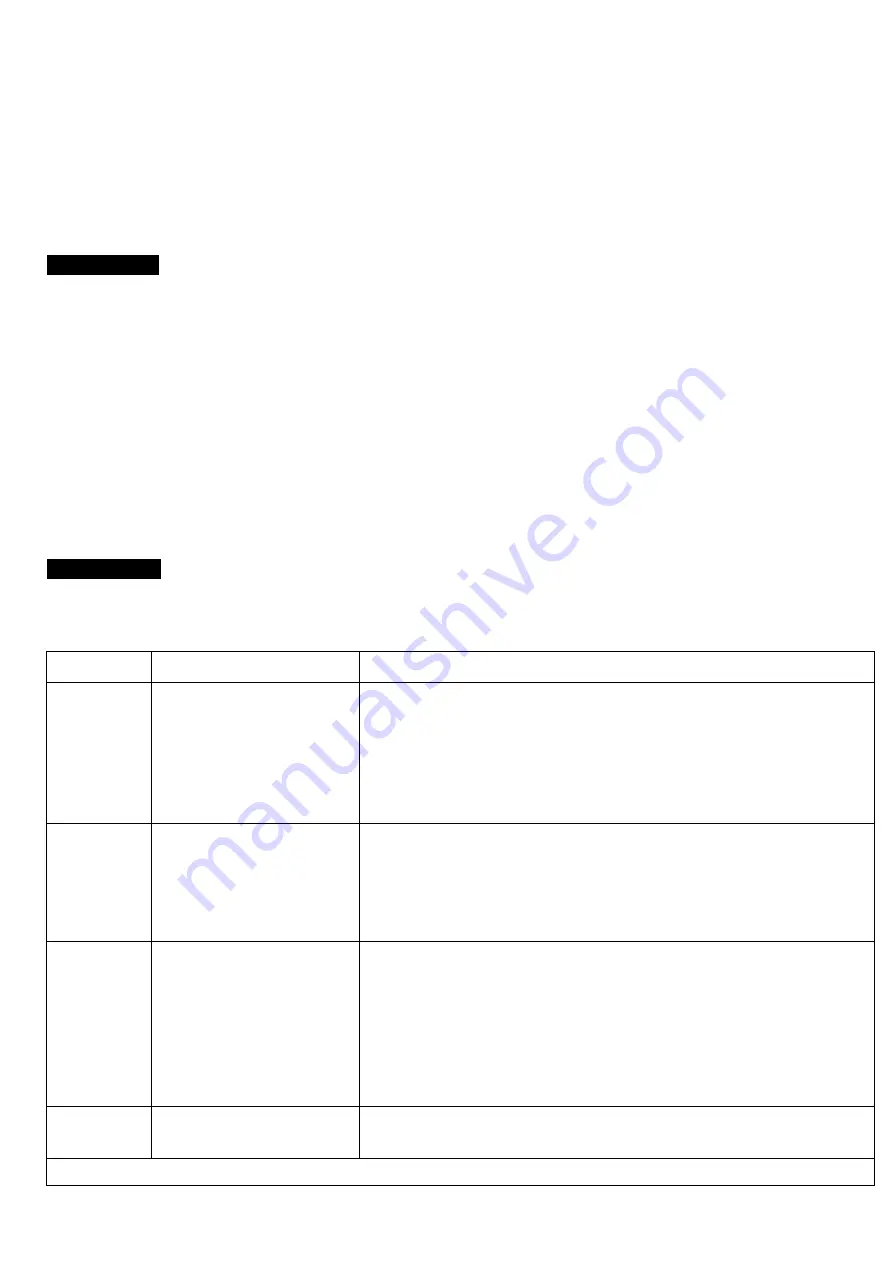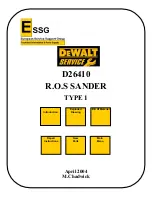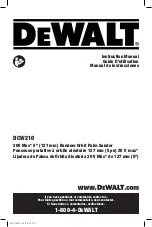
5. Adjust the air compressor’s regulator or the supply line regulator to 90PSI.
6.Connect the tool to the air hose quick coupler.
7.Adjust the regulator control knob to the desired variable speed.
8.Squeeze trigger gently. Start the sander off the work. Set it down on the outer portion of the sandpaper with tool. held at
a slight angle to the work surface. Move the sander slowly back and forth in wide overlapping areas. Let the sander do the
work surface. Do not put additional pressure on the sander. This slows down the speed of the pad, reducing sanding
efficiency and puts additional burden on the air tool motor.
9.When finishing sanding, lift sander off the work before releasing the trigger.
Maintenance
WAR N I N G :
Disconnect wrench from air supply before changing accessories, servicing or performing maintenance.
Replace or repair damaged parts.
Use genuine parts only. Non-authorised parts may be dangerous and will invalidate the
warranty.
1. Lubricate the air sander daily with a few drops of air tool oil dripped into the air inlet
2. Clean the tool after use. DO NOT use worn, or damaged tool.
3. Loss of power or erratic action may be due to the following:
a)
Excessive drain on the air line. Moisture or restriction in the air pipe. Incorrect size or type of hose connectors. To
remedy check the air supply .
b
) Grit or gum deposits in the tool may also reduce performance. If your model has an air strainer (located in the area of
the air inlet), remove the strainer and clean it.
5. When not in use, disconnect from air supply, clean tool and store in a safe, dry, childproof location.
Trouble Shooting
The
following form lists the common operating system with problem and solutions. Please read the form carefully and follow it.
WAR N I N G :
If any of the following symptoms appears during your operating, stop using the tool immediately, or
serious personal injury could result. Only a qualified persons or an authorized service center can perform repairs or
replacement of tool. Disconnect tool from air supply before attempting repair or adjustment. When replacing O-rings or
Cylinder, lubricate with air tool oil before assembly.
PROBLEMS
POSSIBLE CAUSES
REMEDIES
Tool runs at
normal
speed but
loses under
load
■. Motor parts worn.
■ Cam clutch worn or
sticking due to lack of
lubricant.
■ Lubricating clutch housing.
■ Check for excess clutch oil. Clutch cases need only be half full. Overfilling
can cause drag on high speed clutch parts, ie. a typical oiled/lubricated
wrench requires 1⁄2 ounce of oil.
GREASE LUBRICATED:NOTE:
Heat
usually indicates insufficient grease in chamber. Severe operating
conditions may require more frequent lubrication.
Tool runs
slowly. Air
flows slightly
from exhaust
■ Motor parts jammed with
dirt particles
■ Power regulator in closed
position
■ Air flow blocked by dirt.
■ Check air inlet filter for blockage.
■ Pour air tool lubricating oil into air inlet as per instructions.
■ Operate tool in short bursts quickly reversing rotation back and forth
where applicable.
■ Repeat above as needed. If this fails return to service centre.
Tools will not
run. Air flows
freely from
exhaust
■ One or more motor vanes
stuck due to material build
up.
■ Pour air tool lubricating tool into air inlet.
■ Operate tool in short bursts of forward and/or reverse rotation where
applicable.
■ Tap motor housing gently with plastic mallet.
■ Disconnect supply. Free motor by rotating drive shank manually where
applicable
■ If tool remains jammed return to service centre.
Tool will not
shut off
■
‘O’ rings throttle valve
dislodged from seat inlet valve.
■ Replace ‘O’ ring or return to service centre.
Note: Repairs should be carried out by a qualified person.






















